What is brand monitoring and why is it important? [+ tools]
Table of Contents
They say all publicity is good publicity. But the reality is that while some brand mentions present valuable opportunities for engagement, others require urgent attention to prevent reputation damage. Without the right tool to comb through your mentions, determining which ones you need to respond to can feel overwhelming.
Social media monitoring tools scratch the surface, tracking only social networks.
Brand monitoring software captures conversations across the digital landscape. You can intercept issues before they escalate, identify ways to improve sentiment and get valuable insight into how audiences perceive your brand.
What is brand monitoring?
Brand monitoring tracks mentions of your brand or products across online channels. Monitoring helps you identify conversations about your company to keep a pulse on how it’s perceived.
Social media monitoring looks at one facet of the conversation, while brand monitoring software scans social and non-social channels instantly, so you stay in the know without needing to invest much time and effort. The right tool empowers you to collect customer feedback, respond to reputation issues before they escalate and refine your marketing strategy.
What should you monitor for your brand?
To guarantee you stay in the know, monitor conversations wherever people share opinions about you online—from social mentions to review sites, news sites and discussion platforms like Reddit and Quora.
Start by tracking mentions of:
- Your brand name (including variations or misspellings)
- Comparisons to competitors
- Product names
- Keywords describing recent marketing campaigns
- Conversations about your CEO and leadership team
The sentiments people share (good, bad or neutral) can shape how people see your brand.
The best brand monitoring software for social media managers
The best brand monitoring tools do more than track mentions—they tell you how people feel about you and provide valuable insights aligned with your team’s workflow and objectives.
1. Sprout Social
Sprout Social is an all-in-one social media management solution with built-in brand monitoring capabilities that gives marketers a real competitive edge on their data.
Beyond publishing, engagement and reporting solutions, Sprout’s Social Listening capabilities track conversations about your brand and industry, delivering valuable AI-powered business intelligence to drive strategic action. Conduct deeper market research to uncover opportunities and get critical industry insights to stay ahead and master your competitive landscape. Plus, you can take control of your brand’s reputation with effective crisis management, gain visibility into your brand’s health and optimize results by analyzing campaign performance.

Features:
- Brand health monitoring: Tracks direct (and indirect) mentions of your brand with the KPIs you need, then analyzes sentiment and share of voice trends over time.
- Crisis detection and alerts: Use ready-made templates and set custom keyword rules to catch potential problems fast and get real-time alerts instantly.
- Campaign performance tracking: Monitors campaign hashtags and branded keywords to measure the real-world impact of your messaging on public conversation and brand sentiment.
- AI-powered sentiment analysis: Goes beyond rigid “positive” or “negative” categories and analyzes every sentiment in between, so you understand how people really feel.
- Automated insight summaries: AI sifts through data to surface key trends and actionable insights, saving you hours on manual analysis.
- Sophisticated listening queries: AI-powered tools allow users to build powerful search queries—no prior Boolean know-how required.
2. Mention
Mention is a social listening and media monitoring platform with brand tracking capabilities. It offers social publishing and analytics tools, but its core strength is real-time brand monitoring.
It helps you see how people are talking about your brand, catch potential issues early using sentiment analysis and measure the impact of your campaigns.
Features:
- Real-time monitoring system: Tracks real-time brand mentions across social media, news sites, blogs and forums.
- Sentiment evaluation technology: Analyzes sentiment and scores its influence, helping you gauge brand perception, and generates share of voice and trend analysis metrics.
- Customization capabilities: Enables alerts based on keywords or domains, with filters to home in on relevant brand conversations.
3. Alerts by Ahrefs
Alerts by Ahrefs is an SEO tool that doubles as a basic brand monitoring solution. You receive an email whenever your brand or tracked keyword appears on a newly discovered web page.
It’s not a complete social listening platform, but it leverages Ahrefs’ extensive web index to monitor online brand mentions and new backlinks.
Features:
- Web mention tracking system: Scans the web for your brand name and sends an email alert whenever Ahrefs’ web crawler spots a new mention.
- Backlink notification technology: Sends alerts whenever your website gains or loses backlinks, adding SEO information that coincides with brand mentions online.
- Competitor surveillance capabilities: Enables alerts for competitor brand names to keep track of their online mentions.
4. Meltwater
Meltwater is a media monitoring platform for brand tracking across social and traditional channels. It captures brand mentions across online news, social networks, print media, TV, radio and podcasts. Its analytics includes tool to analyze sentiment, share of voice and trends features.
Features:
- Media monitoring technology: Tracks brand mentions across online, social and traditional media, combining digital and traditional tracking in one platform.
- Global monitoring: Customizes reports and tracks performance across countries.
- Analytical measurement capabilities: Evaluates sentiment and calculates share of voice to gauge brand reputation and media impact compared to competitors.
- Notification system: Delivers custom email alerts and notifications to tools like Slack to inform teams of mentions or potential crises.
5. Google Alerts
Google Alerts is a free tool for basic brand monitoring. Simply enter your brand name as a keyword, and Google will email you whenever it finds a new page mention. It’s not a full-fledged listening platform, but it keeps you updated on online brand mentions.
Features:
- Create alerts: Sets up alerts with a few clicks.
- Search monitoring: Taps into Google’s search index for specific keywords then flags new website mentions.
- Source customization: Specifies alert sources, including news, blogs, etc., and sets your alert frequency (immediately, at most daily or at most weekly).
- Notifications: Delivers new mention alerts to your inbox so you can review them without a separate dashboard.
6. Brand24
Brand24 is a media monitoring tool built for instant access to brand mentions across social media, news, blogs, videos, podcasts and forums. Its AI-driven sentiment analysis helps you cut through the noise to identify urgent conversations and protect your brand reputation.
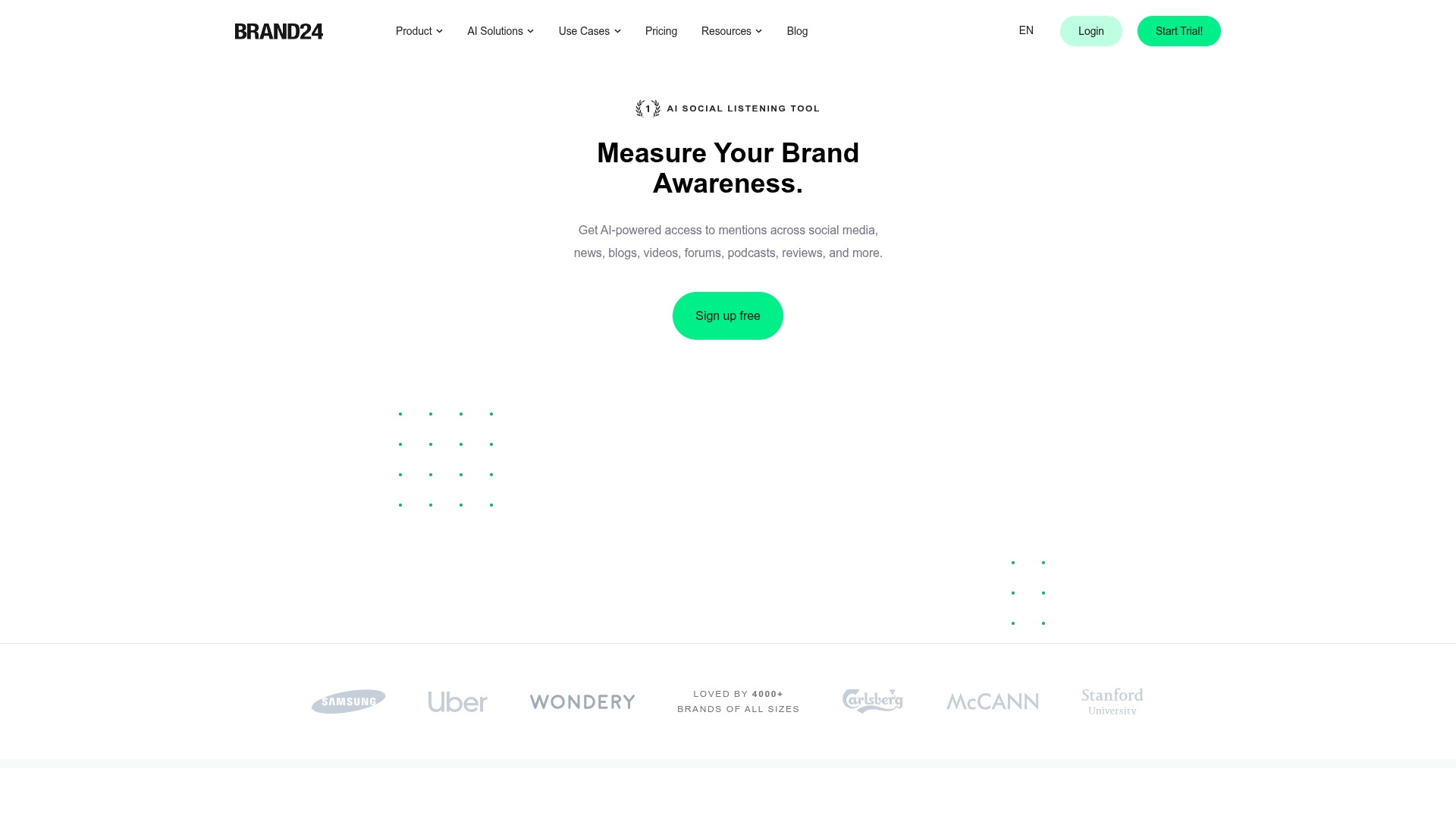
Features:
- Multi-source mention tracking: Monitors conversations across 25 million online sources, including major social platforms like TikTok and Telegram.
- AI-powered sentiment and emotion analysis: Analyzes the emotions behind mentions to provide a nuanced understanding of audience perception.
- Actionable performance metrics: Delivers automated reports on reach, share of voice and influence to measure impact and demonstrate ROI.
7. Mentionlytics
Mentionlytics is an AI-powered social media and web monitoring tool designed to track brand mentions across the internet. It scans major social networks, online news sites, blogs and forums. Its AI analyzes each mention for sentiment and urgency, helping you identify important conversations and pinpoint potential crises.
Features:
- Media monitoring: Monitors social networks and web sources to capture online mentions of your brand.
- Analytical intelligence: Delivers automated AI insights, automatically tags mention sentiment (positive, neutral or negative), detects anomalies or spikes and clusters related mentions.
- Notifications: Triggers instant alerts for important mentions or crises and auto-translates foreign language mentions so you can respond globally.
- Reports: Offers easy-to-understand customizable reports that don’t require a dedicated team of analysts.
8. Hootsuite
Hootsuite is evolving into a comprehensive social performance engine by integrating Talkwalker’s AI-driven listening capabilities. This creates a unified platform to monitor conversations, understand sentiment and schedule content in one place, streamlining the workflow from insight to action.
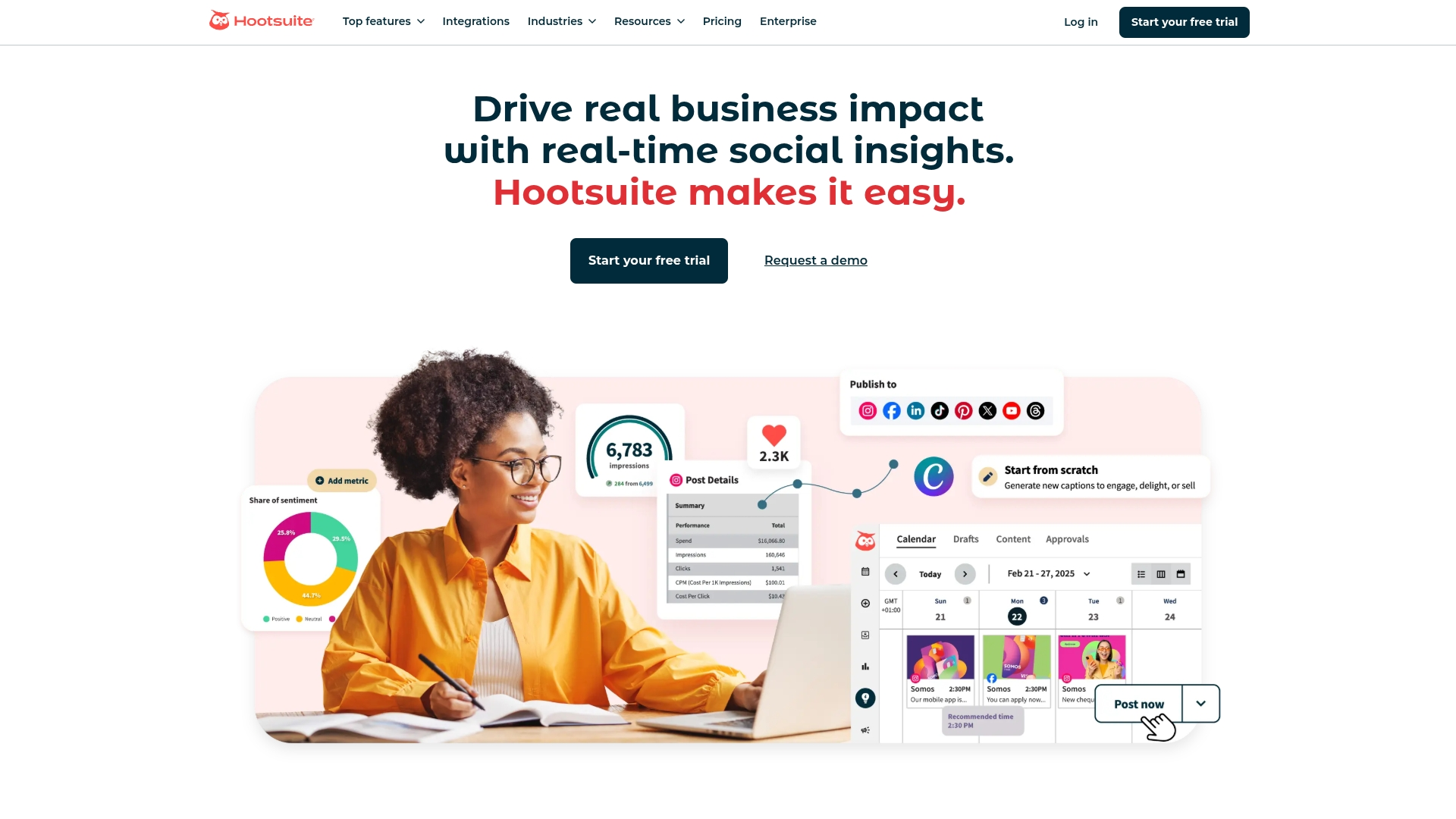
Features:
- Unified performance engine: Combines robust scheduling and management with deep listening analytics, eliminating the need for separate tools.
- AI-powered trend analysis: Leverages predictive analytics and trend forecasting to save time and uncover strategic opportunities.
- Comprehensive media monitoring: Tracks brand mentions across over 30 social networks and 150 million websites, including visual and audio mentions.
9. Sprinklr
Sprinklr offers an enterprise-grade Unified Customer Experience Management (Unified-CXM) platform designed for large organizations. It goes beyond standard brand monitoring by integrating AI-powered social listening with marketing, advertising and customer care functions across more than 30 digital channels, providing a single source of truth for understanding and engaging with customers.
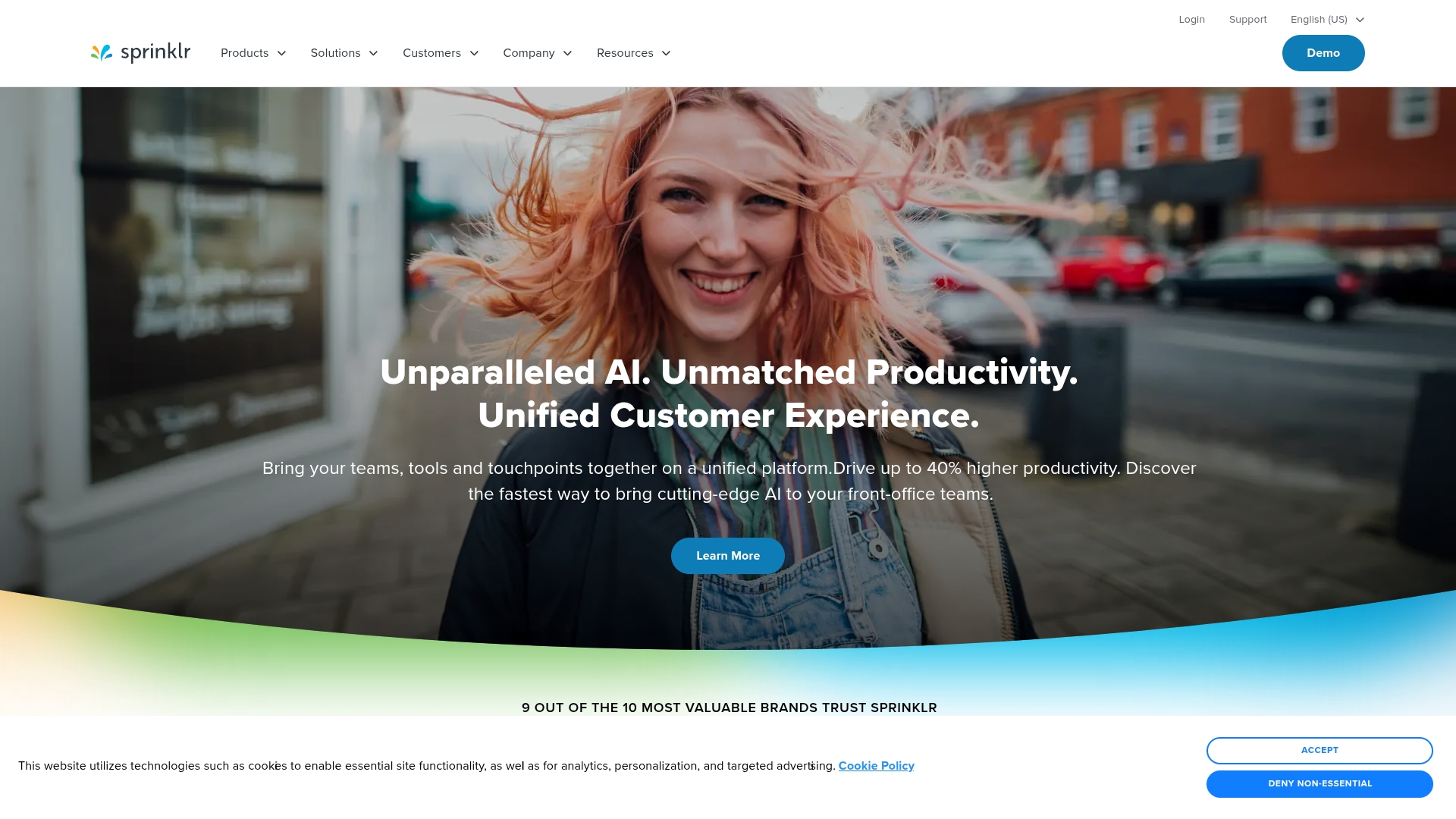
Features:
- Unified-CXM platform: Integrates data and workflows from marketing, advertising, research, care and engagement to provide a comprehensive view of the customer.
- AI-powered social listening: Delivers real-time insights on customer conversations and competitor activities to inform strategy.
- Proactive crisis detection: Uses AI to identify potential crises and reputation risks, enabling teams to respond quickly.
- Comprehensive analytics: Provides robust tools for measuring campaign performance, tracking brand health and benchmarking against competitors.
10. Cision
Cision specializes in PR and earned media intelligence, connecting brand monitoring with the needs of communications professionals. The platform allows teams to track brand health across social media, online news, print and broadcast, bridging the gap between social listening and traditional media relations.
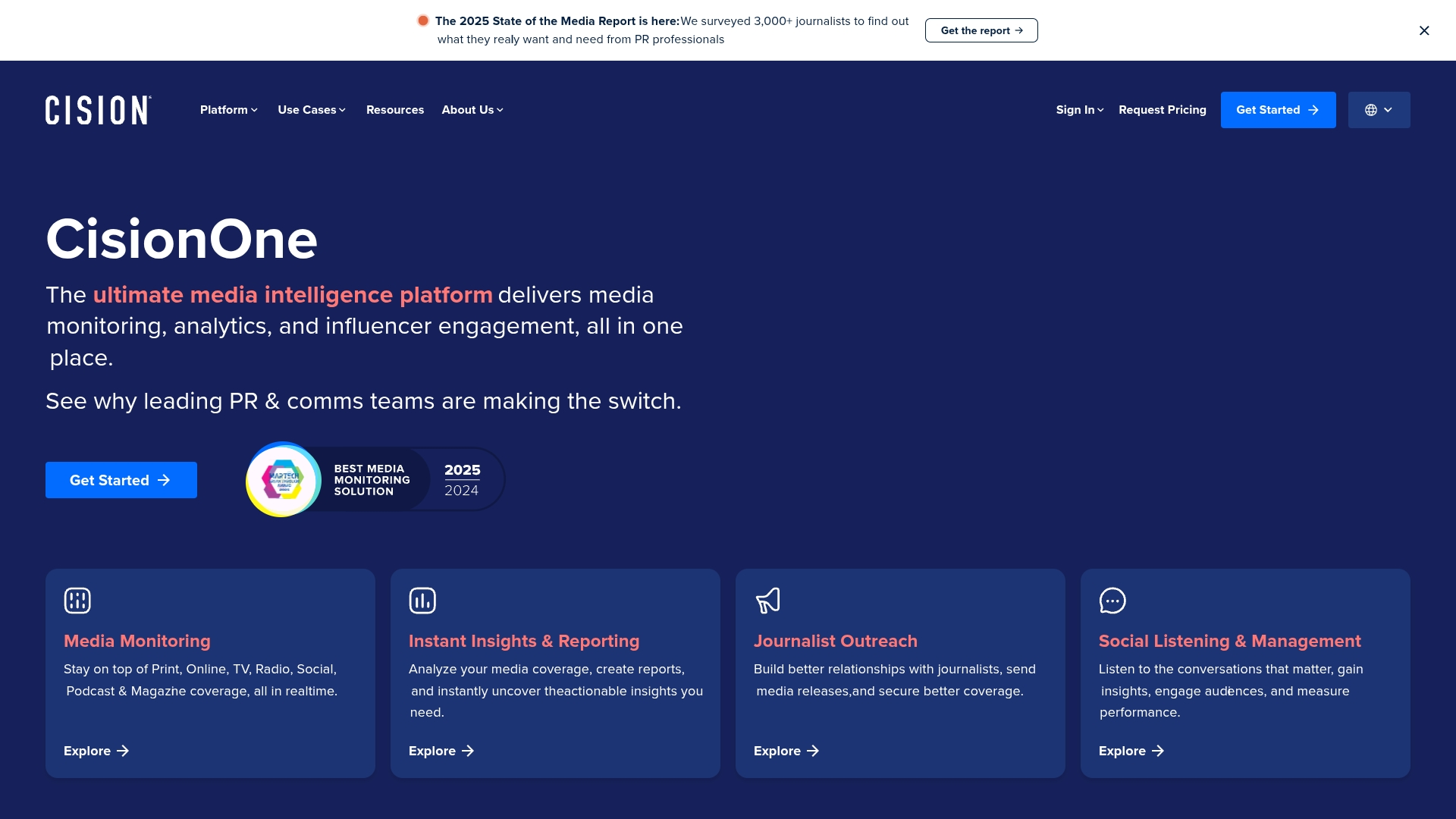
Features:
- Comprehensive media monitoring: Tracks brand mentions across a vast network of online, print, broadcast and social media sources.
- Integrated media database: Includes a database of journalists and influencers to help teams identify and connect with relevant media contacts.
- Reputation management: Uses AI-powered sentiment analysis to flag potentially harmful stories and measure PR impact.
- Performance measurement: Delivers analytics on media reach and share of voice to help quantify the results of PR campaigns.
11. Awario
Awario is a brand monitoring tool that offers powerful features at an accessible price point, making it a strong option for small and mid-sized businesses. It provides real-time monitoring across the web and social media, but its standout capability is a proactive approach to social selling.
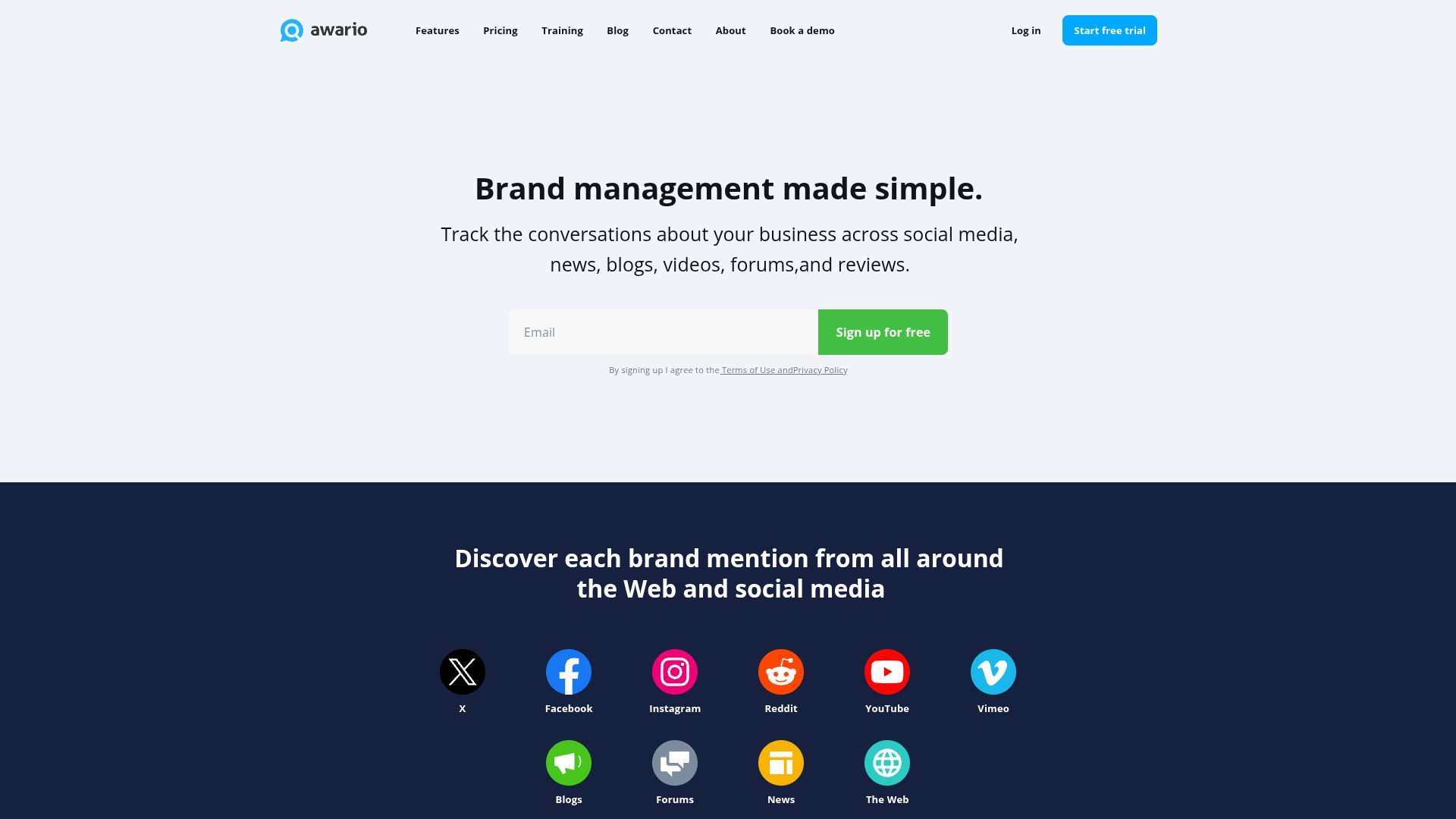
Features:
- Real-time monitoring: Tracks mentions of your brand, competitors or industry keywords across social platforms, news sites, blogs and forums.
- Lead generation: Includes a unique Leads feature that finds sales opportunities by identifying consumers looking for product recommendations or complaining about competitors.
- Boolean search: Allows for the creation of highly specific search queries to filter out noise and focus on the most relevant conversations.
- Insight reporting: Provides sentiment analysis, identifies key influencers and generates customizable reports to share with stakeholders.
12. YouScan
YouScan stands out with its advanced AI-powered visual listening capabilities, addressing the growing importance of image-based brand mentions. The platform goes beyond text to analyze photos and videos, uncovering insights from user-generated content where a brand’s logo or product might appear without any accompanying text.
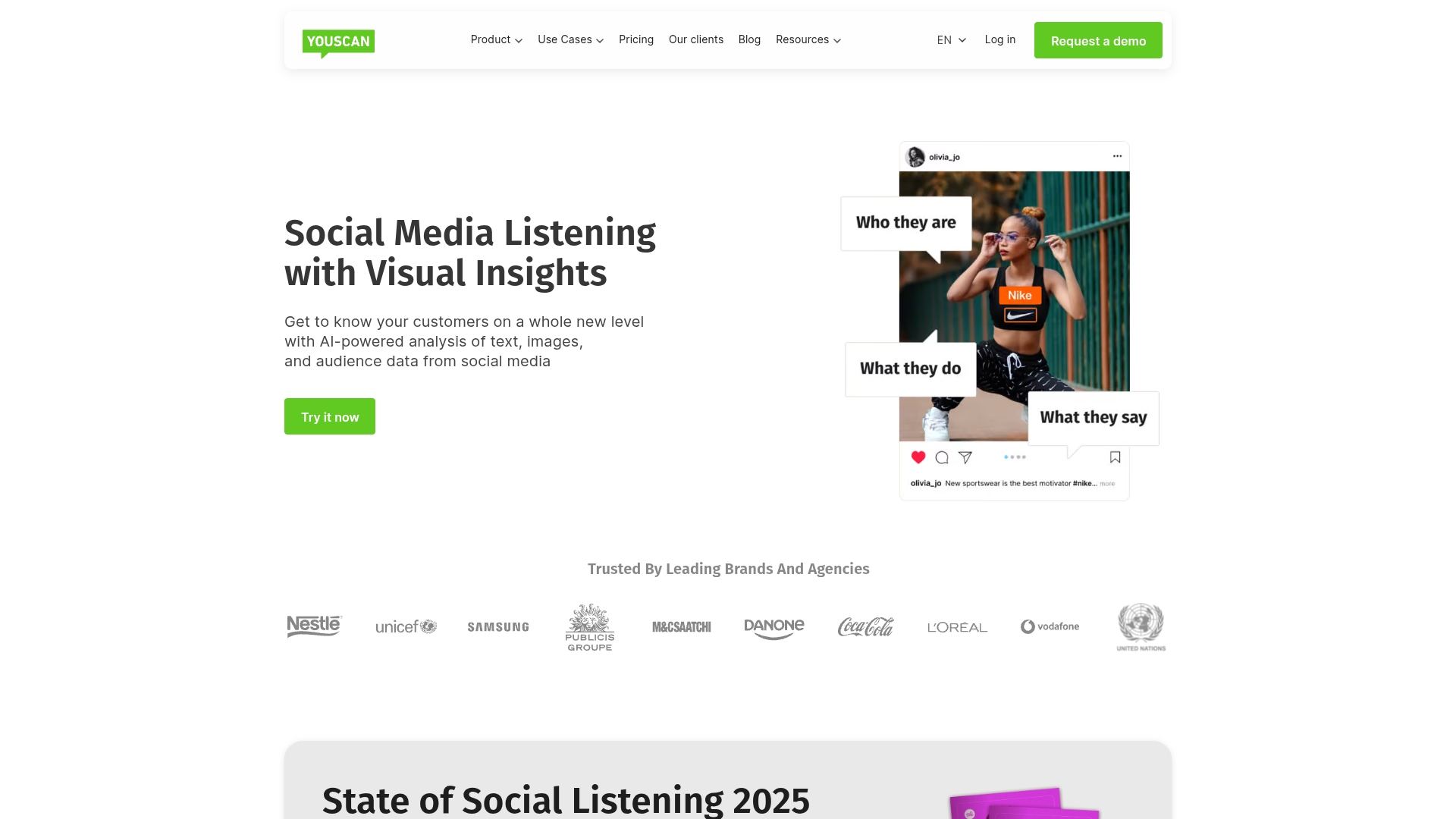
Features:
- Visual intelligence: Uses AI for logo recognition and the detection of objects, scenes and activities in images to find untagged mentions.
- Consumer insights: Analyzes how customers use products in real-world situations and gathers demographic and interest data from visual content.
- Text and visual sentiment: Measures sentiment for both text-based and visual brand mentions to provide a complete picture of brand perception.
- AI-powered analysis: Includes an Insights Copilot to help summarize key findings and accelerate the research process.
Brand monitoring software features to look for
Practical brand monitoring tools serve as your digital eyes and ears across the internet. When considering your options, focus on these key features:
- Broad platform coverage: The tool should track brand mentions across all major channels, not just Facebook or X (formerly Twitter). That means listening on Instagram, LinkedIn, YouTube, TikTok, blogs, news sites, forums and review platforms.
- Real-time alerts: Speed matters in social media. According to The 2025 Sprout Social Index™, nearly three-quarters of consumers expect a response within 24 hours or less. Expect instant notifications when you’re mentioned or when conversations spike. Some tools even flag sudden jumps in brand mention volume.
- Sentiment analysis: Look for software that uses AI to analyze the tone of mentions and flags those mentions or related posts as positive, negative or neutral.
- Keyword and hashtag tracking: An effective tool lets you monitor more than your brand name, with custom searches for campaign hashtags, product names, industry terms or competitor names.
- Analytics and reporting: Look for platforms with clear analytics showing mention volume, sentiment breakdown, top sources and easy report sharing that highlights trends.
With the right monitoring tool, you’ll spend less time searching for mentions and more time engaging with what matters.
How to set up and maximize brand monitoring in Sprout Social
Setting up brand monitoring software includes thinking through your brand management goals and identifying what you want to learn about your brand, products, marketing initiatives and competitors.
In today’s always-on digital landscape, your brand’s reputation is constantly shifting. Sprout’s Social Listening keeps you one step ahead of customers’ needs, competitors and crises. Marketers can strategically increase audience trust in their brand, monitor competitors to improve competitive positioning and proactively protect brand reputation. With Sprout, you can monitor brand health campaign performance, industry trends and competitor strategies to lock in a competitive edge.
To harness these capabilities, here are the key steps you’ll need to take to set up brand monitoring software:
1. Set up tracking of overall brand health and sentiment
Start with a strong foundation for tracking your overall brand health and sentiment, including brand and product mention alerts. In Sprout, navigate to Listening > Brand Health to create a topic query with the keywords you want to track.

Think about all the ways customers mention your company. Include common misspellings, variations, abbreviations and product nicknames. Discover the authentic language people use to discuss your brand by combing through social conversations.
Then, create organized keyword groupings to help capture relevant conversations. For instance, with the tools in this list, you can combine your brand name with the terms “social media management” or “software.” Filtering is especially valuable for brands with common words in their names.
You can also set up keywords that describe brand complaints or your product name. Sprout’s advanced keyword capabilities enable you to get as precise as you need.
Lastly, use Sprout’s sentiment analysis tools to track mention volume and emotional context. Reclassify a mention’s sentiment by manually changing it for improved accuracy, and keep creating rules that generally account for specific terms as you go.
Before you finalize everything, test your tracking parameters using the preview to ensure it captures relevant conversations. Check back regularly to eliminate any irrelevant mentions.
2. Set up crisis management monitoring
Detecting threats to your online reputation is a crucial component of crisis management. Early detection helps you spot and address potential issues before they become full-blown brand crises.
Create dedicated crisis alerts with Sprout by navigating to Listening > Add Topic > Crisis Monitoring template. From there, you can configure alerts with specific negative terms and urgent problem signals. A simple but effective formula might be “[Brand]” AND (“broken” OR “failure” OR “outage”).
Next, set up notifications with Sprout’s Smart Inbox rules to alert you when there’s a spike in these terms. You can even build a crisis dashboard for quick analysis using customized widgets that display potential crisis indicators—like messages with specific keywords.
Continuously test and refine your setup by running practice crisis scenarios and reviewing past incidents to fine-tune keyword settings.
3. Monitor campaign brand conversations
Your campaigns affect more than just numbers—they affect how people see your brand. When you monitor what people say after you run a campaign, you’ll see whether the conversations matched your campaign goals.
To set up campaign-specific listening topics, navigate to Listening > Templates > Campaign Analysis and include your brand name and campaign hashtags as keywords.
Track key metrics on the Performance tab to capture volume and sentiment shifts by comparing mentions before and after campaigns.
The Messages tab shows how top influencers discuss your brand in relation to your campaign. This data can inform and strengthen the brand connection in future campaigns.
Sprout provides tools for ongoing brand monitoring and protection
The real power of brand monitoring goes beyond catching mentions—it’s about transforming those insights into strategic action. Monitoring tools aren’t just defense mechanisms—they’re growth engines for untapped audience and campaign insights.
As conversations about your brand evolve across platforms, Sprout delivers a unified solution that enables you to keep pace and stay ahead of the curve.
Do more than monitor your mentions. Start your personalized demo of Sprout’s comprehensive monitoring tools to protect your brand and turn brand conversations into a competitive advantage.
/1







Share